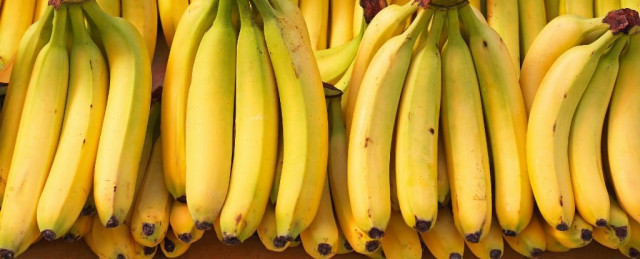Banana killing fungus found in Pakistan, among others
New virus puts the fate of bananas to the test

PHOTO: SCIENCEALERT
As well as Pakistan, the deadly fungus has also been identified in Lebanon, Jordan, Oman, Mozambique, and Australia’s northeast Queensland and is strong enough to kill the Cavendish variety of banana.
Indonesia to continue importing Pakistani kinnows
The Panama disease, caused by the virus, is the same soil-borne fungus that drove the original favourite banana, the Gros Michel variety, to near-extinction in the 1960s.
The disease comes in the form of a new strain called VCG01213, or Tropical Race 4 (TR4). A research team has confirmed that TR4 is a single clone of the original Panama disease, and it alone is what is causing the current worldwide die-off of Cavendishes.
Suspicions about the disease have been floating around since the 1980s, which is why banana farmers do not see this as news. The study however, has confirmed the suspicions; meaning that the Cavendish variety is highly susceptible to TR4.
Pakistan’s mango exports denied Dutch visa
Bananas of the world are now at serious risk from Panama disease as the fungicide-resistant pathogen has crossed continents and breached quarantine efforts to spread across South Asia, Africa, the Middle East, and Australia.
The fungus which is incredibly efficient at infecting banana crops, causes the plant to wilt fast and turn a horrible yellow-brown colour due to a lack of water. The plant then dies very quickly from dehydration.
While reports suggest that bananas won't disappear overnight, they will eventually decay in a 'really big way' if things don't change fast.
"We know that the origin of [Tropical Race 4] is in Indonesia and that it spread from there, most likely first into Taiwan and then into China and the rest of Southeast Asia," Guilford said while reporting for Qaurtz.
Mango exports target way off mark
Scientist, Nadia Ordonez, and her team recommend "drastic strategy changes" which include eliminating infected crops internationally and invention of new diagnostic methods that can quickly detect the disease in plantations and the development of a Cavendish replacement.
"Developing new banana cultivars, however, requires major investments in research and development and the recognition of the banana as a global staple and cash crop (rather than an orphan crop) that supports the livelihoods of millions of small-holder farmers," the researchers conclude.
This article originally appeared on Quartz



















COMMENTS
Comments are moderated and generally will be posted if they are on-topic and not abusive.
For more information, please see our Comments FAQ